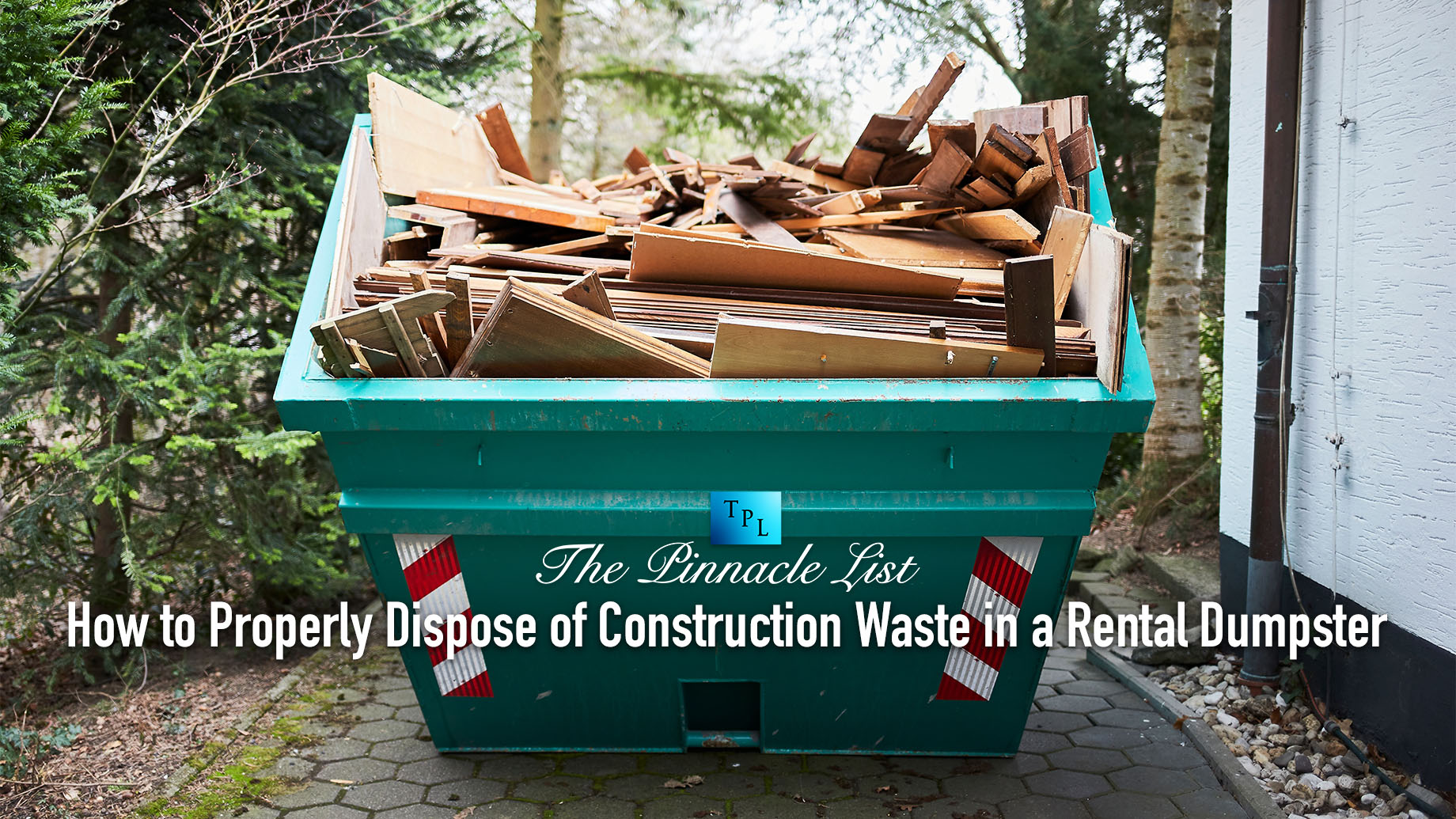
Construction projects generate a significant amount of waste, ranging from wood and metal to concrete and hazardous materials. Proper waste management is essential not only for maintaining a clean worksite but also for complying with local regulations.
Improper disposal can lead to costly fines, delays, and negative environmental impacts. Renting a dumpster simplifies the process, but it’s important to know how to properly dispose of the materials in the Rubbish bin. Doing so ensures a safer work environment and helps avoid unnecessary complications.
How Many Types of Construction Waste You Might Encounter
Construction waste comes in many forms, and comprehending the types will help you determine how to dispose of them correctly. Some of the most common materials found on construction sites include:
- Wood: Leftover wood from framing, flooring, or other building tasks.
- Concrete: Scraps from pouring or breaking concrete.
- Metal: Broken or leftover pipes, nails, screws, and other metal components.
- Drywall: Pieces of drywall left over after construction or demolition.
- Bricks: Broken or leftover bricks from construction or demolition work.
- Hazardous Waste: Includes paints, solvents, asbestos, or other chemicals.
Each of these materials requires specific disposal methods, and some are easier to dispose of than others. Being aware of the different types will help you stay on track and avoid common mistakes.
Why You Should Rent a Dumpster for Construction Waste
Effective construction waste management is crucial for maintaining a safe, organized, and compliant worksite. Renting a dumpster can significantly streamline this process. When undertaking a construction project, it’s essential to rent dumpster for construction that matches the scale of your waste output, whether it’s a minor renovation or a large-scale commercial development.
This ensures a hassle-free experience, optimal space utilization, and cost-effectiveness throughout your project. By doing so, you can also minimize environmental impact and reduce the risk of accidents and injuries on the worksite.
How to Choose the Right Size Dumpster
Dumpster sizes vary, and picking the right one is key to making sure you have enough space for your waste without overpaying for extra capacity. Small Refuse containers are typically 10-15 cubic yards, and larger ones can hold up to 40 cubic yards of waste. To choose the correct size, estimate how much debris your project will generate. Here is how you can choose the right dumpster:
Check Local Regulations
Before renting, make sure you’re aware of any local regulations for Refuse container placement and what materials are accepted. Some areas have specific rules about where you can place a Rubbish bin, how long you can keep it on your property, and what can go inside. Contact your rental company or local waste management authority to clarify the rules.
Rent a Dumpster for Construction Waste
Once you’ve chosen your dumpster and are aware of the regulations, it’s time to rent a Refuse container for construction. The company will deliver it to your site, and you can start filling it up with construction debris. When you’re done, they’ll pick it up and haul it away, properly disposing of the waste.
How to Dispose Different Types of Waste Properly
Not all types of construction waste can be disposed of in the same dumpster. Different materials require separate disposal methods to ensure compliance with regulations and avoid contamination or additional fees. Here’s a breakdown of how to dispose of different types of materials safely and legally.
Wood
Wood is one of the most common types of waste on construction sites. If the wood is clean and untreated, it can typically go in the Rubbish bin with other construction waste. However, if the wood is treated with chemicals or paint, it may need to be disposed of separately. Always check with your rental company or local waste management service to see if they accept treated wood.
Concrete and Brick
Concrete and brick can be heavy and take up a lot of space. Many rental Waste storage units can handle concrete, but it’s important to check with your dumpster service provider to make sure. If your project generates a lot of concrete, you may want to rent a separate container specifically for these materials. This helps prevent overloading your Waste storage unit, which could lead to additional fees or delays.
Metal
Scrap metal, such as pipes, nails, and rebar, is common in construction waste. Most rental dumpsters accept metal, but it’s best to separate it from other materials, as some recycling centers may offer cash for scrap metal. Check with your dumpster provider if they accept metal, or consider setting up a separate recycling container for it.
Drywall
Drywall is relatively easy to dispose of, but it can take up a lot of room in your Waste storage unit. Be sure to break down large sheets of drywall to maximize space. Also, check with your rental company to make sure they accept drywall, as some companies have special guidelines for disposing of it.
Hazardous Waste
Hazardous materials, such as paints, solvents, and asbestos, must never go into a dumpster. These materials require special handling and disposal. Contact a local hazardous waste disposal facility to find out the best way to get rid of these items safely.
Conclusion
Properly disposing of construction waste in a rental dumpster is a straightforward process as long as you follow the correct steps. Choosing the right size Waste storage unit, comprehending the types of waste, and ensuring you adhere to local guidelines will help keep your project on track. Taking these precautions ensures that your site remains clean, safe, and compliant with all regulations.